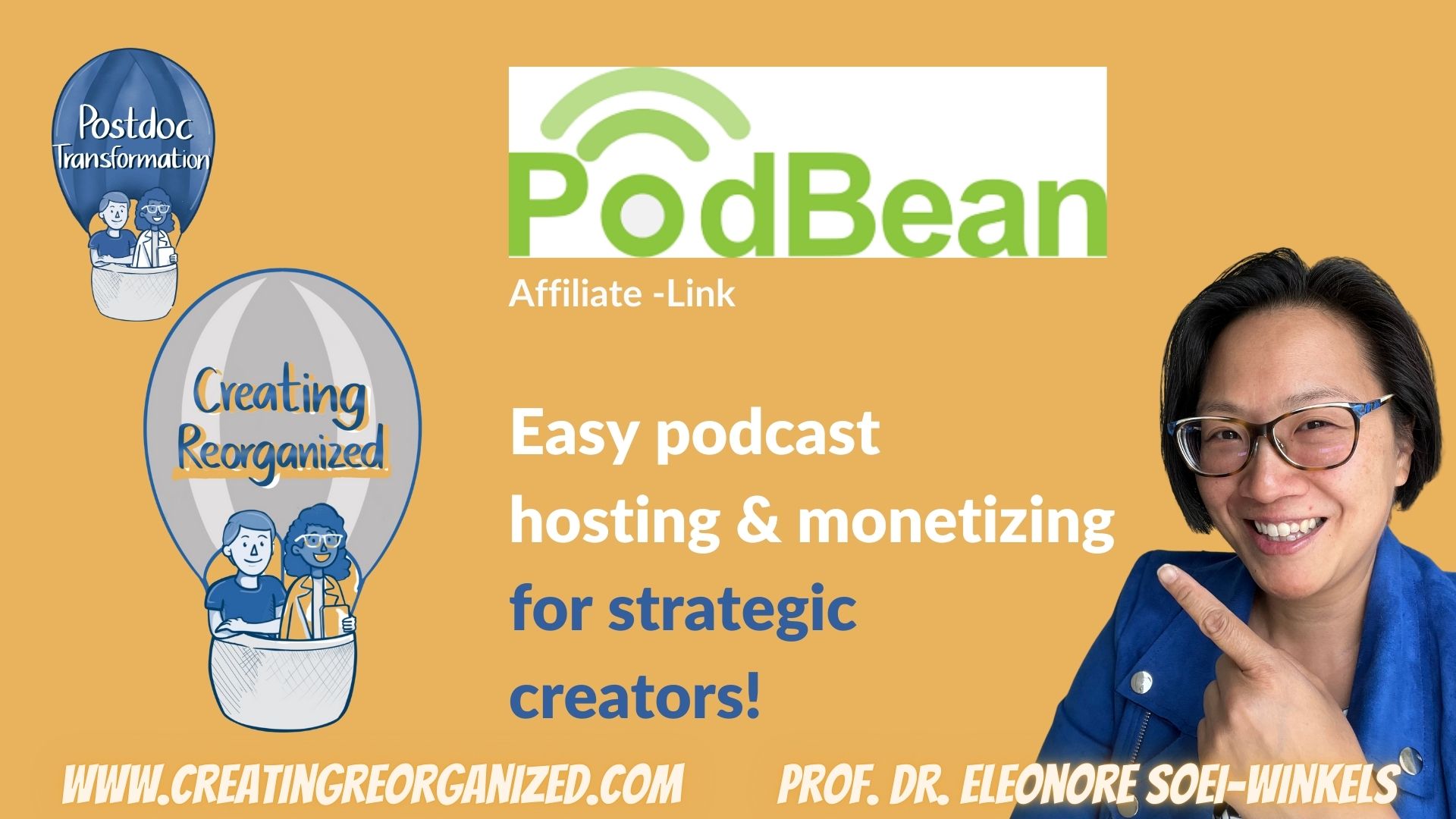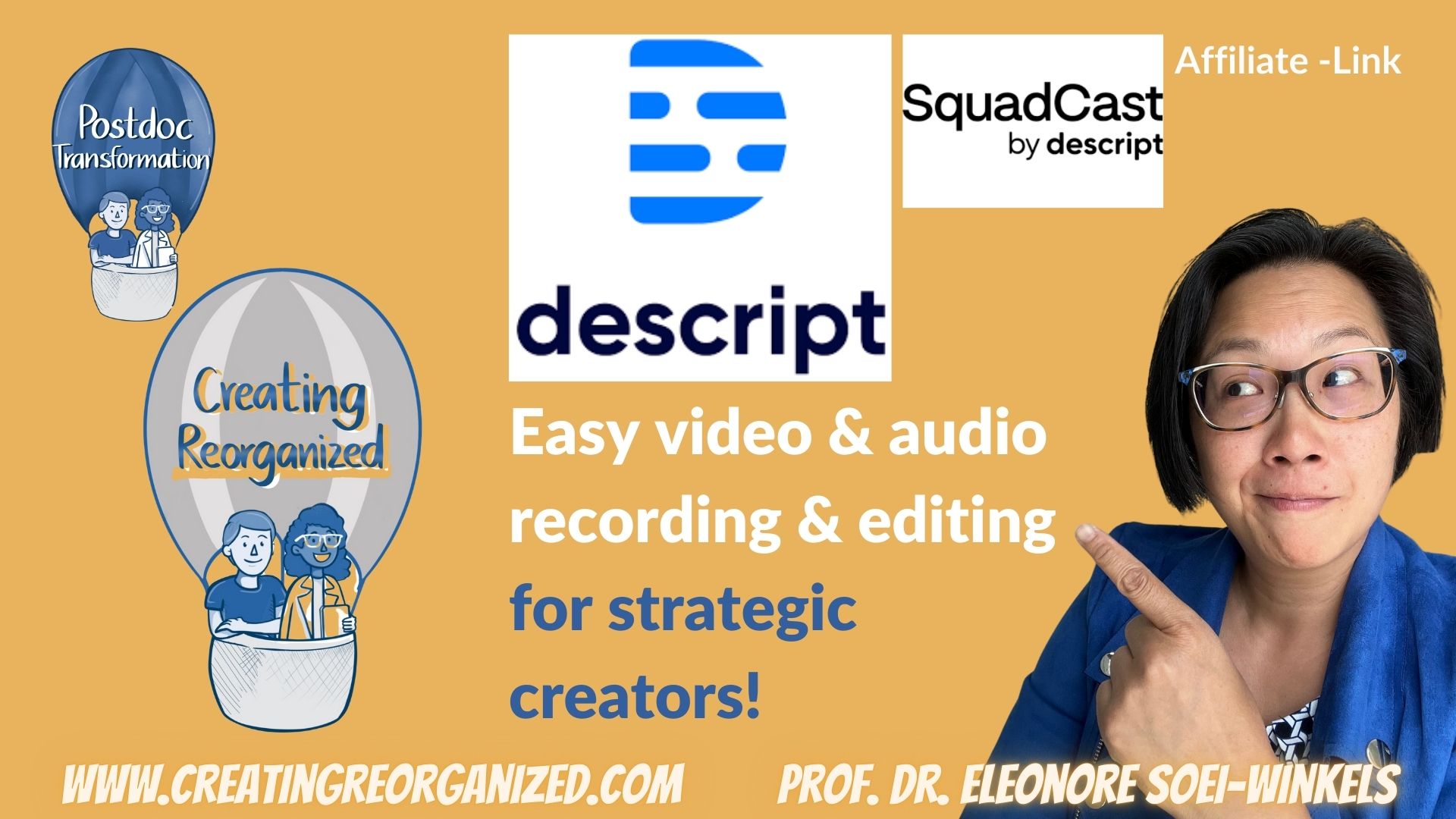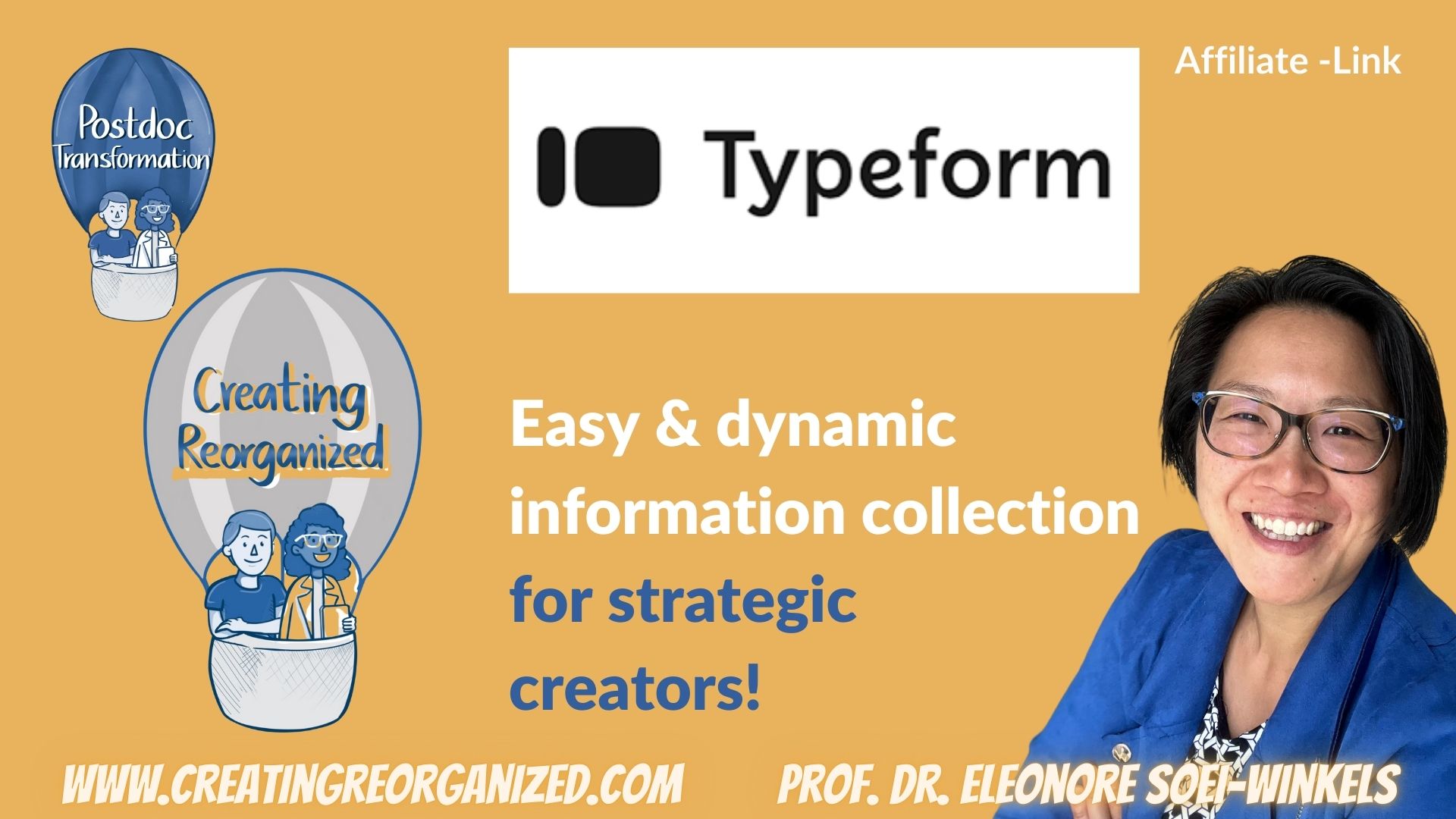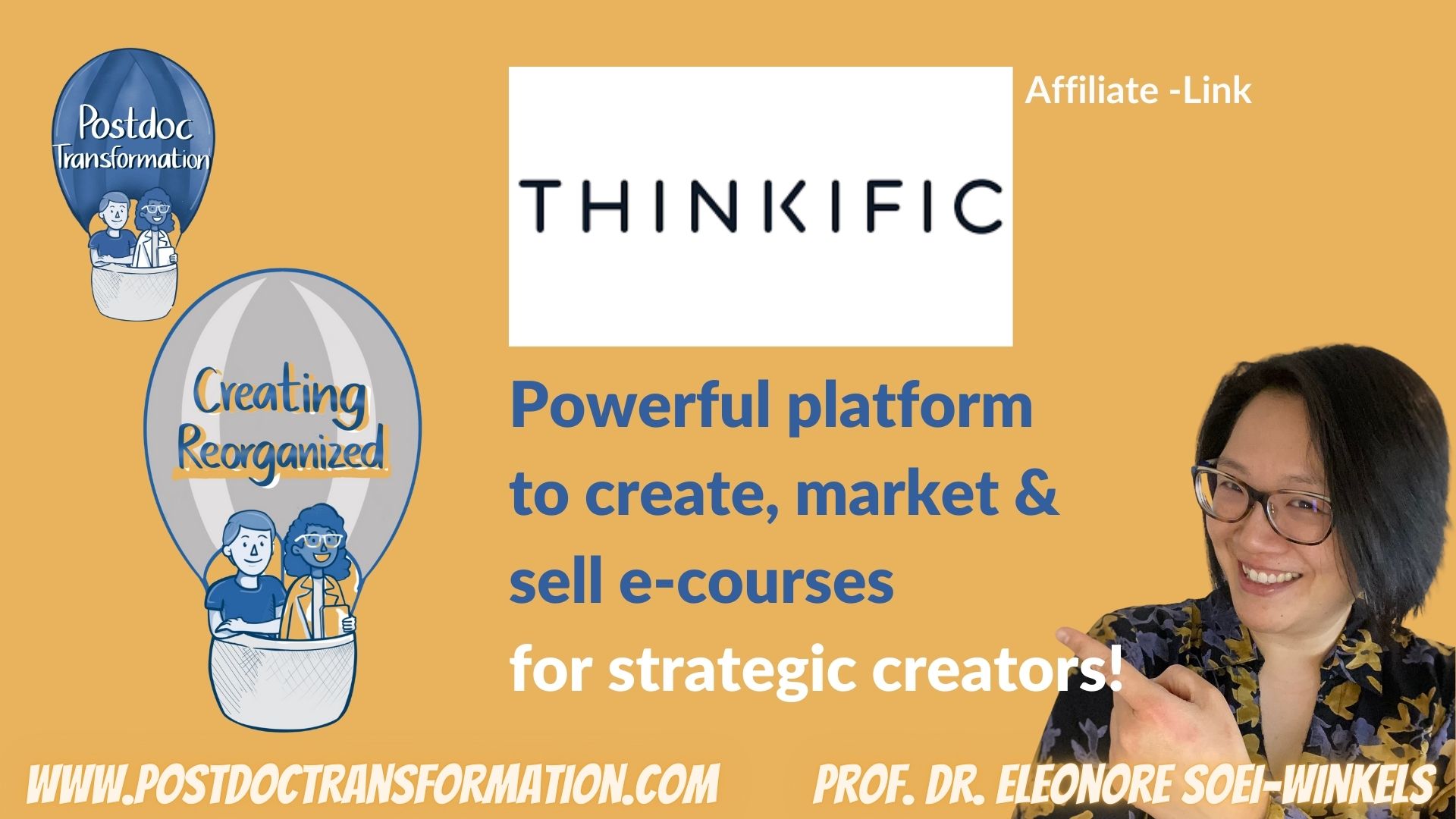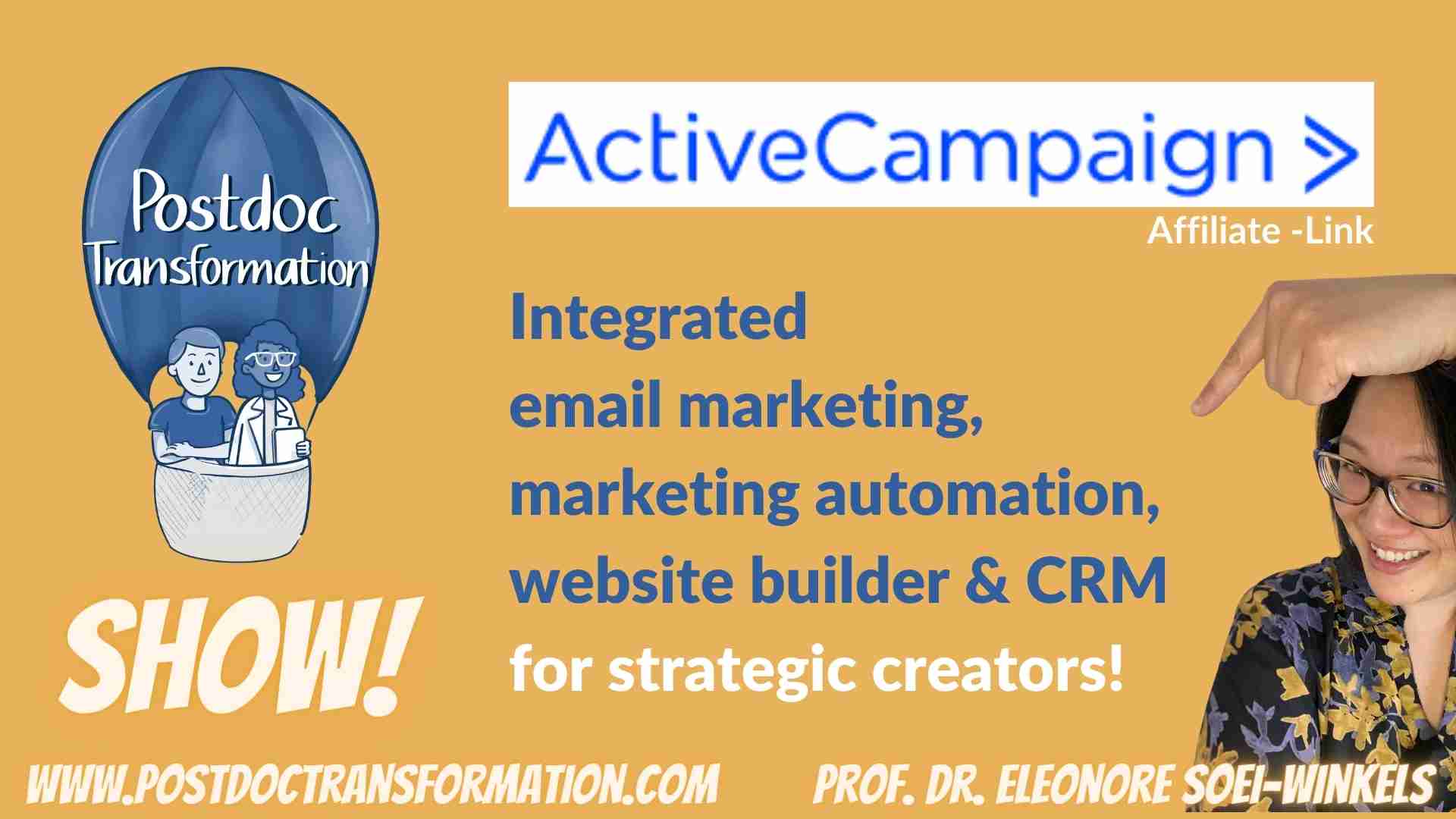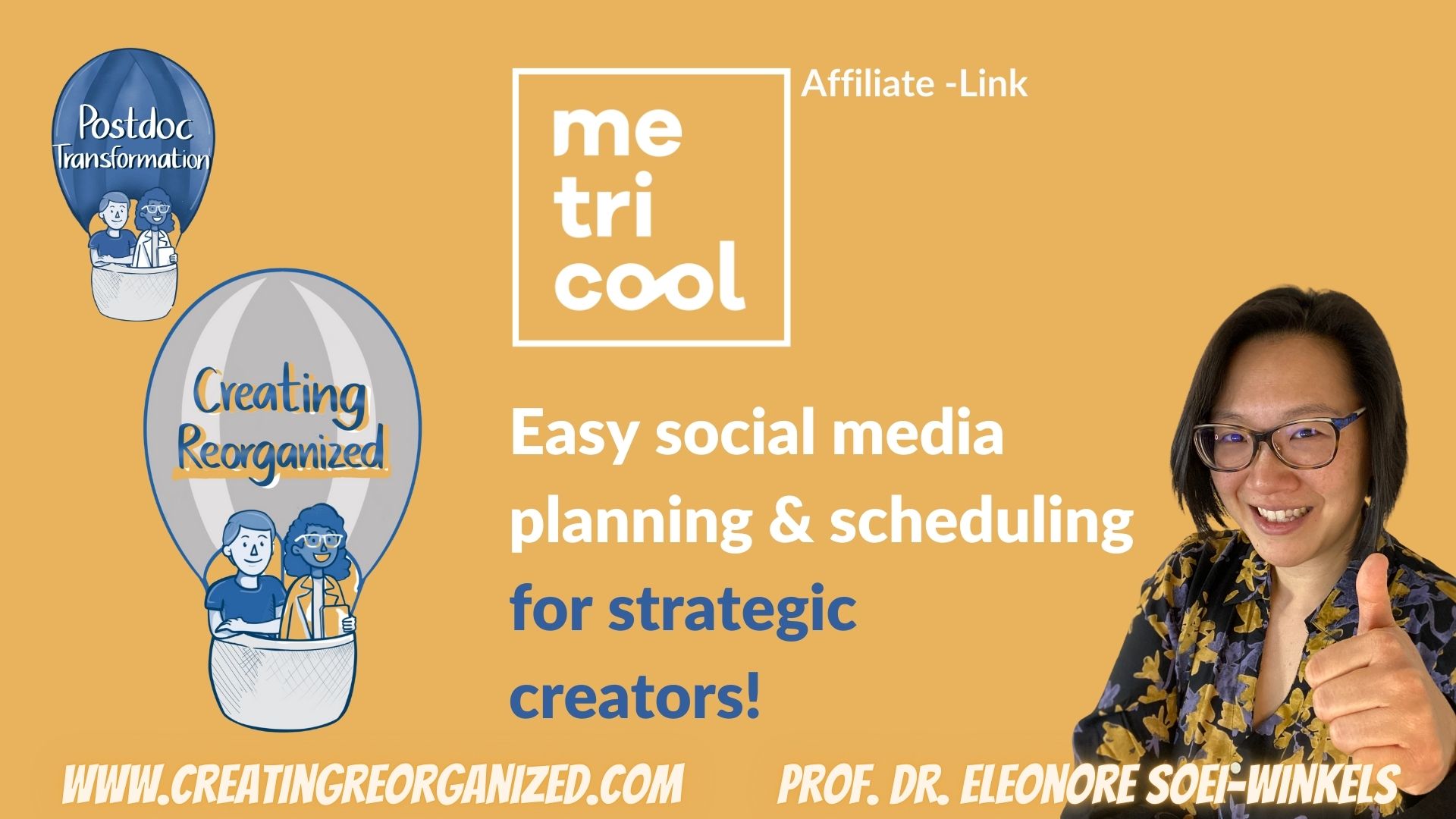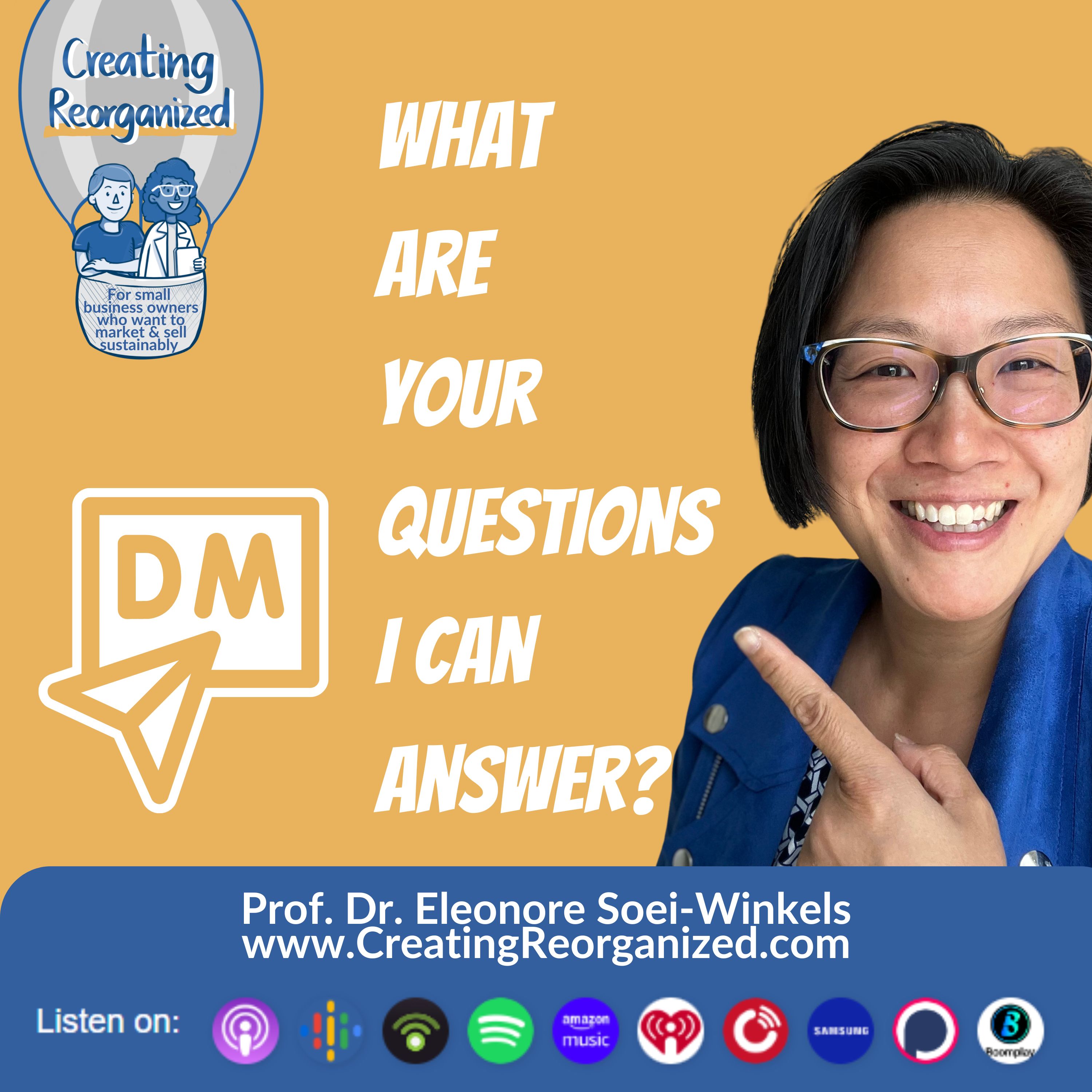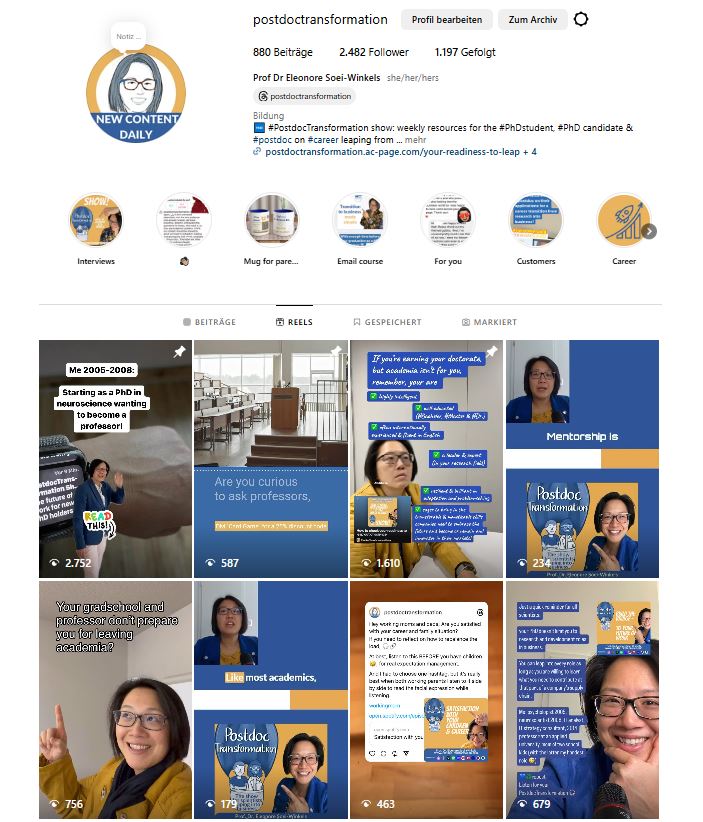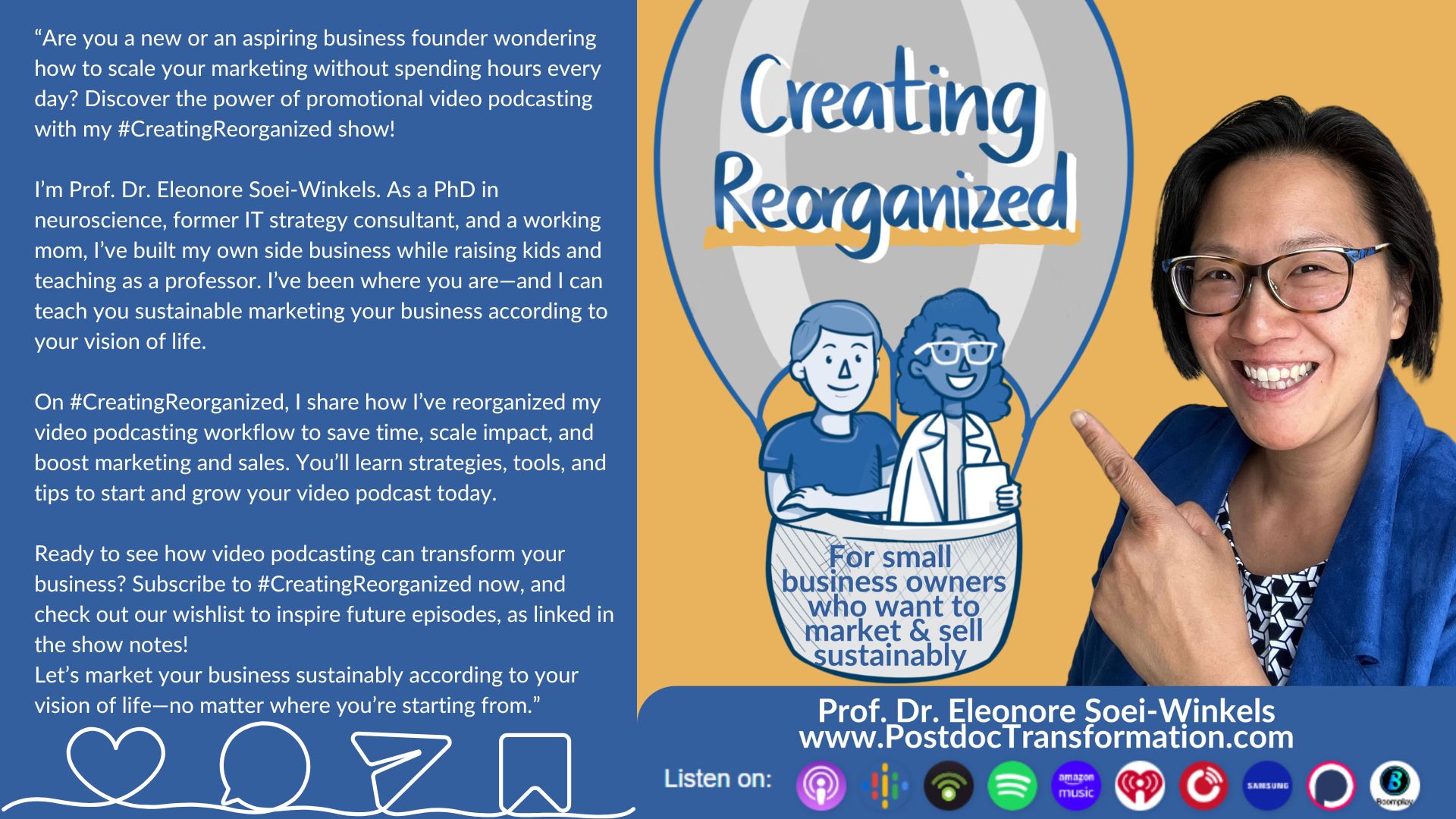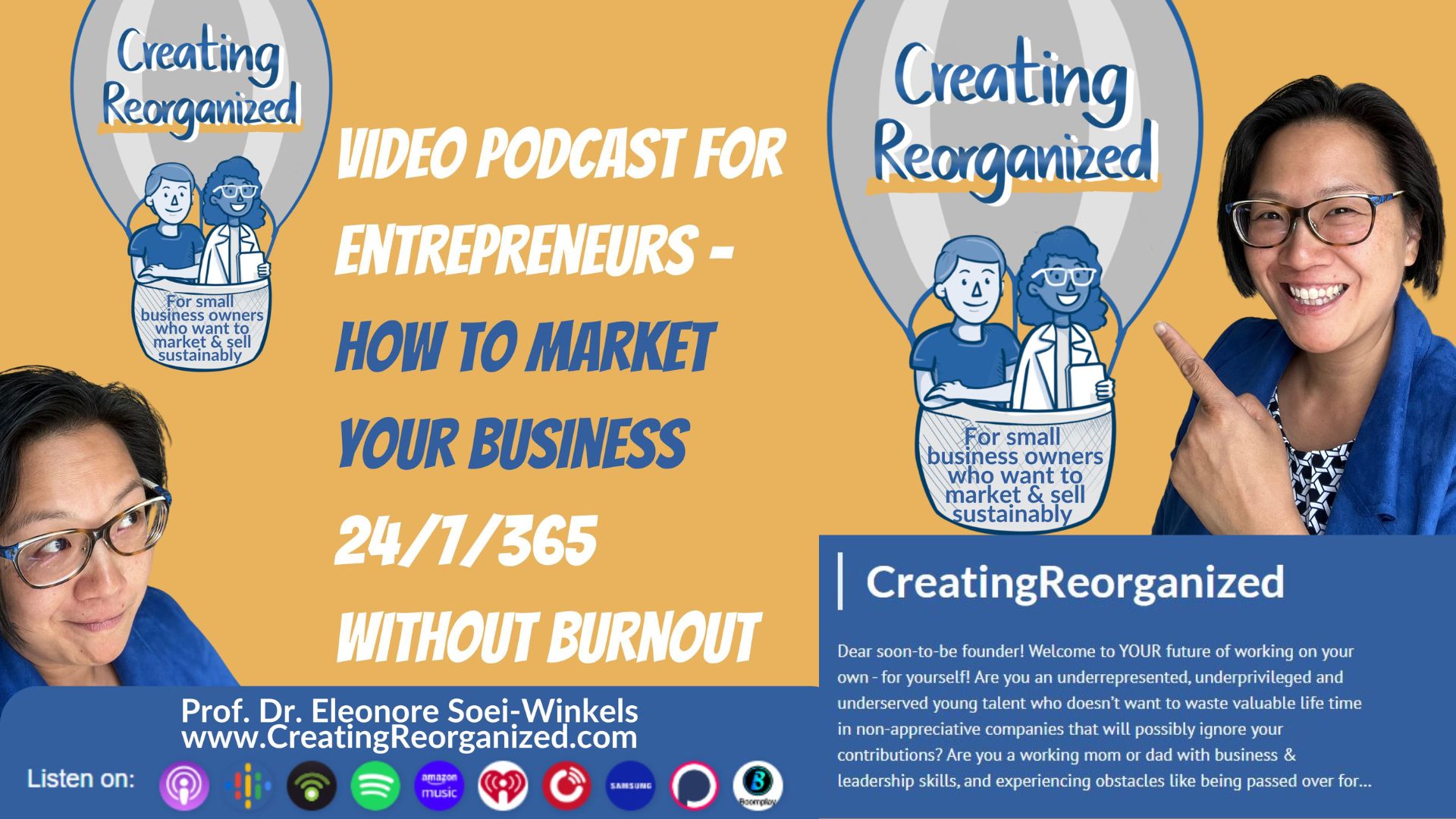
Video podcast for entrepreneurs -
how to market your business
24/7/365 without burnout,
CreatingReorganized show
Do you want to market your services and products at all times, on many social media platforms, without burnout? Use the power of a business promotional video podcast!
In this CreatingReorganized show episode, Prof. Dr. Eleonore Soei-Winkels shares insights on managing entrepreneurial burnout, strategic podcasting strategies and tactics for business owners, and the importance of a smart tech stack.
Key tools like Podbean, Descript, Thinkific, TypeForm, ActiveCampaign, and Metrical are highlighted for their role in automating processes, improving content, and generating leads.
Practical examples, like a seasonal content strategy for real estate sellers, showcase the effectiveness of video podcasts in building a sustainable business. The episode emphasizes the benefits of leveraging technology for business growth according to your vision of life.
If you are a new or aspiring founder of your small business and have no time to waste, or really struggle to do your social media marketing, you will enjoy our #CreatingReorganized show!
In my day job as a psychology professor I teach my bachelor and master students in real life, how to reorganize processes in a goal-directed and future-proof way in companies. That’s what I had done for a living as a former IT strategy consultant.
For my own career coaching business on the side, I can only dedicate a fraction of my time – because I prioritize care work for my little children. I face the same or similar challenges like all small business owners. So, I applied all my experience and knowledge to create my other video podcast #PostdocTransformation to streamline my social media marketing and to boost sales of my coaching, e-courses and affiliate products or services.
I strategically capitalize on professional tools to scale my impact according to my vision of life.
Listen and subscribe to this #CreatingReorganized show, so you will learn to do the same for your own business, to build the know, like and trust factor and to boost sales of your services or products!
Please also ask your business-specific questions, because for season 2, I envision interview episodes with aspiring and new founders like you, if you want to get your #CreatingReorganized according to your vision of life!
Dear CreatingReorganizer,
welcome back to another episode of CreatingReorganized! This is the show where we talk about how to market a thriving, scalable business, all by using the power of a video podcast - without burnout. I am cutting through the noise, making a name for myself, and building my business according to my vision of life. If you want this for yourself– this episode is gold for you!
Now, you know I love to be direct, so let me ask you: if you are feeling that entrepreneur burnout, let me share, you're not alone. I've been there myself! And our episode 4 about burnout and specifically podfade was an all-time favorite listening, so my team and I thought, this is worth a sequel episode!
Some of you actually do know me also from holidays or dinners in my hometown AND you experience me quite relaxed. Well, I learned from my mistakes, and in this episode, I want you to benefit from my learning curve, LOL!
So today, we're going to talk about how to get off that hamster wheel and onto a path that takes you directly to consistent sales and more freedom. We're diving into strategic podcasting for business, and I promise you, by the end of this episode, you'll have a clear plan to stop the hustle and start the thriving.
We'll also be talking about my secret weapon, my "set-and-forget" tech stack, and why I chose partners like Podbean, Descript, Thinkific, ActiveCampaign, Typeform, and Metricool. These are the very tools that allow me to run my two podcasts—including my other show, the PostdocTransformation video podcast for scientists leaping into business—while still being a professor in part-time and, most importantly, a mom who picks up her kids from school and spends meaningful time with them.
This is not about doing more; it’s about doing what matters. Let’s get into it!
The Problem: The Hamster Wheel of Burnout
The life of a small business owner is tough. You're the CEO, the marketing manager, the sales team, and the coffee maker all at once. And in the age of social media, you feel this constant pressure to create, create, create. If you're not posting a new Reel or a TikTok or a LinkedIn post, you feel like you're falling behind. It's an endless cycle, and it's exhausting. It leads to that dreaded entrepreneurial burnout.
There's a reason for this, and it’s a concept from psychology called the Yerkes-Dodson Law, as linked in the show notes. Now, don't worry, I won't get too academic on you. Just think of a bell curve. At the beginning of your business journey, a little bit of stress or arousal is a good thing. It gets you motivated, and your performance goes up. But the Yerkes-Dodson Law says that there's a point—the peak of that bell curve—where if you add more and more stress, your performance actually starts to decline. You get overwhelmed, you make mistakes, and you lose the joy. You hit burnout. You're doing more and more but getting less and less out of it.
I know this feeling so well. When I continued to deliver my career coaching workshops at graduate schools, on top of starting my professorship when my first child was 8 weeks old, I felt like I was running on empty. My brain was a thousand tabs open at once. This is what psychologists call "cognitive load," and it's a huge problem for business owners today. Cognitive load is the amount of mental effort that your working memory is using at any given time. When you're constantly trying to remember what to post on Instagram, what to write in an email, and how to follow up with a lead, your brain becomes a messy, overwhelmed filing cabinet. And when your working memory is full, you simply can’t think clearly anymore. You start making simple mistakes. To be honest, I did not do any social media marketing for my business back then. That was mistake number one.
I remember one day, I was so tired from trying to do it all that I out my keys into the freezer. But it was more than just a funny mistake. It was a sign. A signal from my brain that I was on a path to complete exhaustion. My business was at the backburner and unattended, and it was all because I had no structure, no strategy, and no system. Luckily, I had local grad school coordinators who asked me about new workshops, year after year. Well, until the COVID pandemic hit us all.
I still remember how my in-person career transition coaching business completely crumbled during the early stages of the COVID pandemic. All my clients were gone. I was at home, busy parenting two kids under five. It was a perfect storm of stress. I was trying to teach my university students over video conferences, handle the chaos of my family life, and deal with the existential fear that my business was dying. I had no system for attracting and nurturing new leads, and it was devastating. I felt like I was failing at both my business and my family. This moment of crisis forced me to completely re-evaluate everything. I remembered, that I had been an IT strategy consultant at Accenture. I thought: Why not take my own medicine, LOL. I realized that the only way forward was to build a system that was technically scalable, sustainable, and, most importantly, gave me my life back.
And here's your actionable prompt: Take a moment to reflect. On a scale of 1 to 10, with 1 being complete chaos and 10 being effortless flow, where are you right now with your business and family life? Write that number down. It's our baseline.
The Plan: The Strategic Blueprint
Let's pause quickly to appreciate those who sponsor this valuable episode.
I want to share with you my best marketing agent, serving my underprivileged, underrepresented, and underserved audience, leads and clients is key for me. As an Asian working mom, business owner, and professor in Germany, I can't be marketing and selling all the time. Like I said already, I'm also very mindful with my own resources.
So, I chose Podbean as my podcasting host and monetizing provider. I'm on the Unlimited Plus plan for our PostdocTransformation and CreatingReorganized shows, and every year I click on renewal, because. Podbean ensures your audience can inclusively listen and watch your podcast according to their visual and auditive needs. You can easily share your podcast on all major podcasting directories, which allows you to reach a huge audience on their favorite devices, no matter where they are. Podbean also has an ads marketplace, so you can attract and manage sponsors for dynamic ads that play based on your audience criteria.
This is a game-changer! It allows you to serve your audience with free, valuable content, and your ad sponsors financially support you independently in each episode. And of course, you'll see insightful stats per demographic, so you can tailor your future episodes and present suitable ads. And here’s a pro tip: find business who offer products and services adjacent to yours, so that you can authentically promote their business to your listeners who may need and want that anyway!
If you want to try out Podbean for your own podcasting, DM or email me "Podbean" so I can share my experience and consult with you. Please check it out via my link in the show notes. I only get a small financial reward if you become their customer using my Podbean link. Thank you for the financial support!
After this quick appreciation of our advertisement, we now return to our valuable episode.
Set your business promotional video podcasting goals
This is where your video podcast becomes your secret weapon. Instead of throwing spaghetti at the wall with random social media posts, a video podcast is a concentrated, powerful tool. It’s your showroom, your trust-builder, and your lead generator all in one. But we're not just going to do a video podcast; we're going to do it strategically to get you off the burnout hamster wheel.
And that brings me to our next psychological model, Goal-Setting Theory. This theory, developed by Locke & Latham, as linked in the show notes, says that people are most successful and motivated when they have clear, specific, and challenging goals. Instead of saying, "I want to grow my business," you say, "I'm going to publish one 45-minute video podcast episode every two weeks for the next six months to generate 50 qualified leads for my services." See the difference? It's a clear, manageable goal that gives you a roadmap.
To make this even more effective, we can apply the SMART goal framework to your video podcasting strategy.
Specific: You’re not just creating "content." You're creating an eight-episode series on a specific topic.
Measurable: You can track the number of downloads, leads generated, and sales.
Achievable: You're batching your work to make it a sustainable habit, not a sprint to the finish.
Relevant: Your episodes are designed to answer the most pressing questions of your ideal client.
Time-bound: You have a clear start and end date for each season. And to be honest, this is my game changer: ASAP, I write down my childrens’ exam dates, our family vacations, our school breaks. Then I plan my professorship around that. Last, I plan my video podcasting season and the times, when I can dedicate working with clients. I cherry pick just those clients, who are aligned to my values and already qualified from listening to my CreatingReorganized show. And that’s when working with clients is most fun, goal-directed efficient and effective!
So, the plan is to create a seasonal video podcast for small business owners. Instead of hustling every single day, you can batch your content. You pick a theme for a season, you record four or five episodes over a couple of days, and then you have a month or two of content ready to go. This frees up your mind to focus on what you love to do, whether that's serving your clients, developing new products, or, you know, just picking up your kids and learn with them for school, and let them enjoy their hobbies.
I live this. My own system is to plan a season ahead. I'll plan my winter content for the spring, spring for the summer, and so on. My podcast season is always eight episodes. I strategize a story arc for those eight episodes, with the potential of switching or updating topics as needed. But I batch the scripting and recording, so I can do it in quieter times ahead of the podcast season. This is also how I can even plan for weeks and months, when I want to focus on my children’s scholastic demands, which is key for me.
Example for a real estate seller
And for our listeners today, let's make this concrete with a real-world example. A listener wrote in and asked, "How do I plan my video podcast to avoid burnout? I'm a real estate seller and feel like I'm constantly scrambling for topics to attract both homeowners and buyers."
What a perfect question for a seasonal strategy! For a real estate business, a seasonal strategy is your secret weapon. Instead of creating random content, you plan your episodes around the natural rhythm of the year. This not only makes content creation easier but also makes your content more relevant and timely for both sides of your target audience. You can have a different focus for each quarter, and each quarter can have its own eight-episode story arc that leads your listeners on a journey.
For example, a Winter podcast season could be all about "The Preparation & Planning Season." This is perfect for attracting homeowners who are getting their houses ready for a spring listing, and buyers who want to get their finances in order before the market heats up.
I’ll put a chapter marker here and after the next segment, because I will be more specific than usual. That was also another listener’s request to be more applicable in my examples. So, to deliver to both of my listeners, who took their time to DM me: Here is what an eight-episode story arc for a real estate seller could look like for the winter season: All of them have evergreen potential, unless I say it differently.
Episode 1: Winter Home Prep: "The Winter Checklist: 7 Secrets to Make Your Home Shine Before the Spring Rush." This episode isn't just about cleaning. It's about a deep, emotional understanding of what a homeowner feels when they're thinking of selling. You're giving them a practical, step-by-step guide that builds confidence and demonstrates your expertise.
Episode 2: Financial Foundations: "Beyond the Mortgage: How to Find the Ideal Lending Partner for Your Dream Home." This episode addresses a huge pain point for buyers, qualifying them and helping them with their biggest financial decision, which is a key part of the how to qualify leads and convert them into paying customers process we talked about in a previous episode. It positions you as a trusted advisor, not just a salesperson.
Episode 3: Buyer Strategy: "The Quiet Season Advantage: Why Winter is the Smartest Time to Start Your Home Search." This episode empowers buyers, who often feel overwhelmed by the competitive spring market. It's about educating them and setting their expectations, which is a crucial part of building trust early in the sales funnel.
Episode 4: Market Predictions: "Your Crystal Ball for 2025: Expert Predictions on Our Local Real Estate Market." This is a perfect episode for attracting both sellers and buyers. You're demonstrating thought leadership and providing valuable, data-driven insights that nobody else is. This is how you cut through the noise and stand out with your personal branding and point of view. While it has evergreen potential, this one is very easy to update for the next years to come, LOL.
Episode 5: Smart Improvements: "DIY or Hire Out? Low-Cost Winter Improvements That Add Thousands to Your Home's Value." This episode is pure value, addressing the cost-sensitive nature of your clients. It's a topic that's highly searchable on platforms like Pinterest and TikTok and helps homeowners feel like they can take control of their home's value without breaking the bank.
Episode 6: Tax & Legal Prep: "Navigating the Red Tape: A Simple Guide to Tax Documents and Legal Prep for Home Sellers." This topic is often boring, but by making it a simple guide, you're solving a major fear for homeowners. You're showing your expertise and reassuring them that you can handle the complexities so they don't have to. Not so much evergreen potential, as the laws may change you may need to update this one accordingly.
Episode 7: The Seller's Mindset: "Ready to Say Goodbye? How to Emotionally Prepare to Sell Your Family Home." This is a deep-dive into the human side of real estate. It's an emotional episode that builds massive rapport and trust. You're showing empathy, which is a powerful tool in sales. This is a great example of storytelling from behind the scenes to engage your leads.
Episode 8: The Pre-Approval Power: "The Golden Ticket: Why Getting Pre-Approved in Winter Gives You a Bidding Edge." This episode is a final, strong call to action for buyers. It's a powerful conclusion to the season, providing a clear next step that will qualify leads for you.
The beauty of an eight-episode or seasonal story arc
You see how each episode builds on the last? It’s not just a collection of random topics; it’s a full story arc that demonstrates your expertise and builds trust. And I did that story arc for both of my video podcasts. Especially, when you tease the next and mention the previous episode, you boost your retention rates like I do. I enjoy 100% weekly retention rates, because my listeners can anticipate and get the next episode as promised and don’t want to miss the next one. Easy, LOL.
And here's the best part: For the real estate seller, I've created all four seasonal content calendars—for winter, spring, summer, and autumn—and put them into a free, downloadable PDF. You can find this valuable resource in our show notes. It’s my gift to you to help you start planning and stop scrambling. It's time to build a business that works for you, not the other way around.
If you want to know more about getting started, check out our very first episode, "Why founders of a small business need a video podcast to build trust and boost sales." It lays the foundation for all of this.
And here's your actionable prompt: Take 15 minutes right now and brainstorm two potential quarterly themes for your business. Don't overthink it—just write them down. If you want me to help you with a seasonal story arc, DM me your business details.
My CreatingReorganized System and
my "Set-and-Forget" Tech Stack
Now, how do you make this all happen without adding more to your plate? The answer is automation and a smart tech stack. My goal was to create a system that felt like a well-oiled machine, so I could focus on the human side of my business. And this is also a living example for my students and clients, showing that women can capitalize on technology and not be overwhelmed by it.
It's all about creating an automated data flow, a system that works in the background, so you can do what you do best: serving your clients and living your life. This is where my tech stack comes in. I've chosen each of these tools because they are simple, powerful, and, most importantly, they talk to each other to save me time, reduce errors, and operate as a living, breathing AI sandbox.
Let me get specific here. Every tool in my stack has a purpose and works together to build my business while I’m doing other things.
Podbean: The Distribution Powerhouse & Analytics Engine
I use Podbean for hosting and distribution. This is my ultimate "set-and-forget" tool. I upload my video episode once, and Podbean automatically distributes it to every major podcast platform—Apple, Spotify, Amazon Music, you name it. It's truly a time-saver because I don't have to manually upload my episode to a dozen different places. Only when Spotify changed something on their end, I had to go back in to my Podbean settings. I almost forgot how to do that, because I set that up 2 years ago.
But the real magic lies in their new statistics features. This goes beyond simple numbers of your latest downloads and top episodes. You can see listening trends and engagement rates of your listeners, compare a selected episode to average downloads of last episodes, 7, 14, 30 or 60 days after release. I can see, which episodes were played, re-played and replayed again. For example, if you have an educational show like this one, reflecting the episode may be easier or even different at the second time of listening. It allows me to track the average consumption time of each episode.
Let me give you a specific example of how I use this. I recently saw a significant drop-off in listenership at the 12-minute mark on one of my episodes. I went back to the transcript (which Descript generated, but more on that in a moment!) and realized that's exactly where I had a long, detailed explanation of a complex academic theory without a real-world example. It was too dense. Using that Podbean data, I now know to break up those theoretical segments with a personal story or a quick "aha!" moment. This is how you use data to improve your content and ensure you're getting a true ROI. It’s not about guessing; it's about knowing exactly what content resonates with your audience. And that’s why I have chapter markers to balance more details for the real estate seller vs. general information for all of you.
And here's your actionable prompt: For the existing podcasters, log into your Podbean or podcast hosting platform’s dashboard and identify your three most-listened-to episodes and a point where a significant number of listeners dropped off. For those without a podcast, download the Podbean app and explore a few podcasts in your niche.


